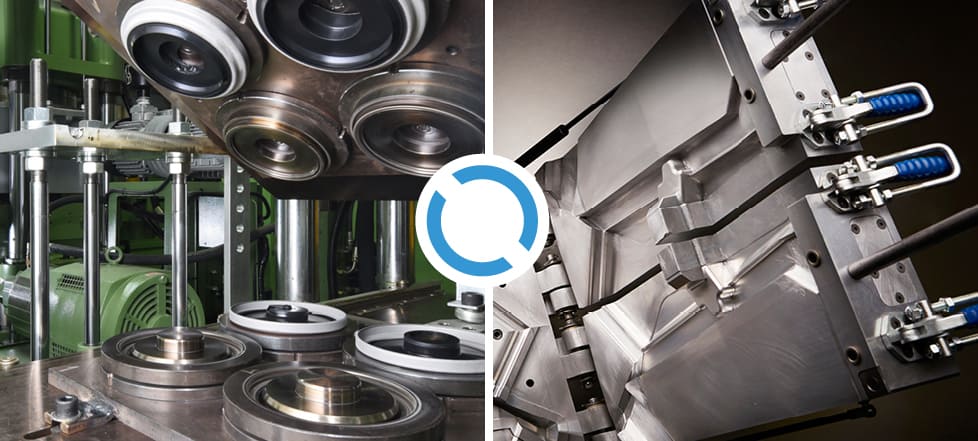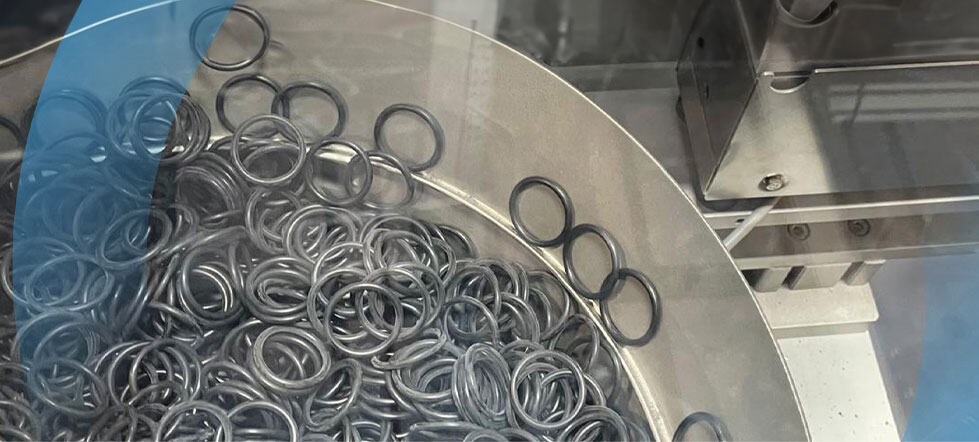Vulcanization (or curing) is the process that transforms rubber compound into a solid material. But what gives the rubber the required shape? Two of the most common technologies to shape rubber materials into solid finished parts are compression molding and injection molding. The major differences between these two technologies include mold design and when and how you place the rubber into the cavities.
Injection Molding
As the name implies, in injection molding, the mold is first closed and then rubber is automatically “injected” into the cavity.
While injection molding results in very little waste, shorter cycle time, reduces the need for secondary trimming and has low levels of flash, it usually has higher set-up costs and more expensive machinery and tooling.
Compression Molding
In compression molding, the material is first manually placed into the cavity and then the mold is closed.
Compression molding is often chosen for hard or expensive materials, bigger parts, and parts with cross-sections that need long curing times.
Compression molding has been around since the 1850s and is an economical and high-quality solution for the manufacture of low to medium volumes of rubber products. While compression molding results in the least amount of waste, can handle stiff materials, handles larger parts, and offers simple and more cost-effective tooling, it can result in less consistent parts, contamination of colored materials, and longer cure and cycle times.
Both technologies use high pressure, heat and time to vulcanize the material and each method has its pros and cons.

The curing process time in injection molding process is shorter because the material is already injected when it is preheated, which makes the potential capacity higher. Because the mold is closed before the material is injected, this also can guarantee improved parting lines and reduce flash sizes. On the other hand, this process, in addition to higher costs, also requires ongoing maintenance.
The compression molding process can be considered as a simpler process to ensure effective rubber-to-metal bonding.
The molds are more cost effective and the setup process is usually easier and faster. While some geometrical designs can be almost only be undertaken in an injection molding process, some materials can only be vulcanized using compression molding.

Techno Ad offers both compression and injection molding.
Talk to our team about your specific application.



